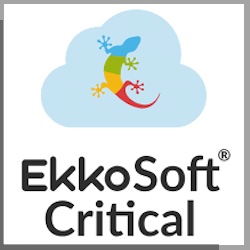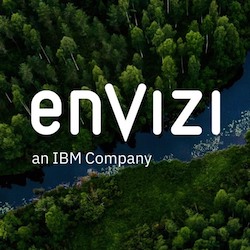With the depleting levels of global resources and drastic climate change conditions, the world today can be compared to a football that’s being played with by three different players: The destroyer, the creator and the preserver.
For the destroyers, there are multiple contributors who are ruining Earth’s natural resources and helping to bring the world to an end. These contributors are widely involved in and hugely responsible for high emission rates, burning of fossil fuels, using plastics, cutting down trees - causing a rise in temperatures and sea levels, all types of pollution, unsustainable consumption and wasting electricity and water.
Fighting for over decades, are the creators. This group is made of people innovating across industries - introducing new technologies, green solutions, renewable energies, policies around climate change and new-age methodologies based on age-old practices to save the planet.
Finally, there are preservers who are close allies of the creators and are looking for sustainable measures to replenish what is already lost with a focus on conservation of what’s left today. This category of people is focused on giving back what’s being taken away from the Earth’s resources and creating a circular economy.
For example, at Google’s October Geo for Good Summit in California attendees gathered to share their experiences and learn more on how to use mapping tools for planetary sustainability and human resilience around the world.
Meeting net-zero goals
Ranging from mapping of tree cover to using generative artificial intelligence (GenAI) and natural resources to decarbonize the world and mitigate climate change actions, these new-age workers are taking the Earth’s conservation work to an optimum level.
Six months after HCLTech expanded its partnership with Google Cloud to help enterprises leverage GenAI capabilities and develop joint solutions, HCLTech Trends and Insights (T&I) followed the participants of the summit closely on YouTube. T&I also spoke with one of them to understand how technology has been helping in their work.
“The Green Web initiative of Pune Knowledge Cluster (PKC) takes a holistic view of the subject and proposes a technology-enabled approach to increase the current tree cover and enhance carbon sequestration ability of Pune. TreeVerse, a project conceptualized under Green Web, is aimed towards developing a model that enables the city authorities in planning for net-zero emissions and conservation strategies. Apart from TreeVerse, ConnecTree is another technology-driven web-based platform, under the Green Web program, that enables mapping of tree cover, especially saplings, and monitors their survival by training citizen volunteers,” said Atreyee Saha, Research Assistant with PKC, speaking to HCLTech Trends and Insights.
“Apart from these, DigiTree, another Green Web project, aims to develop and test various AI-based analysis methodologies for tree mapping and biodiversity assessment in Pune and to identify challenges and potential for further research. Carbon Neutral Campus is a community-driven approach to identify and compute carbon emissions from academic and industry campuses,” added Saha, who feels India can become a global sustainability player.
India — with at an estimated 2.6 gigatons per annum — is the third-largest CO2 emitter after the US and China. Here are some sustainability trends for 2024 that will not only help India, but other global emitters meet net-zero goals.
- Mangrove plantation at local levels and supplying to conservation groups like Mangrove Alliance for Climate will impact climate change positively.
- Going beyond the technologies shaping a safe smart city, carbon-neutral housing promises to erase 17% of CO2 emissions that come from the sector
- Sustainable computing: Assessing and mitigating climate risks associated with corporate lending is a sustainable move forward
- With Chandrayan 3’s success, over 150 startups raised $62 million this year for sustainable (or reusable) rocket and satellite building
- Akin to the UK’s Greyparrot, AI will improve waste management and help segregate the 160,000 tons of daily garbage India produces
- FinOps can smartly be used to measure and curb scope 4 or avoided emissions, industry experts strongly believe
- Similar to what Shell does in Canada, carbon-capture technologies will help with underground storage and repurpose stored carbon in various sectors
- Creation of substitutes to single-use plastic bags using sugarcane straw, bamboo and paper will promote cottage industries
- Successful with the first hydrogen-fueled bus in New Delhi, the government mulls this as an alternative to fossil fuels to power its transport system
- Green ways to deal with crop burning should be encouraged at government level and further help with incentives for quick adoption
The next crisis: Water
Climate change impacts the natural water cycle to such an extent that the world today is facing a massive crisis that’s affecting 1.42 billion people exposed to either drought or increased flooding.
Despite being the Earth’s most abundant natural resource, only about 2% of all water is freshwater. That’s why understanding and prioritizing water sustainability is an urgent priority. With the adoption of next-gen technologies, organizations can revolutionize their approach toward water sustainability, positively impact the environment and save the planet.
From a leading technology company perspective, HCL Group partnered with the World Economic Forum’s open innovation platform UpLink on the Aquapreneur Innovation Initiative to accelerate the innovation agenda around freshwater and recently introduced its specialized platform AquaSphere that can track, analyze and report water usage metrics in real time.
“AquaSphere was built on BTP [Business Technology Platform], but the inspiration for this solution came from our chairperson’s big initiative called Aquapreneur, which was launched at WEF. This initiative focuses on how to use intelligence to understand the usage of water. The irony is that 70% of the Earth is surrounded by water but we still have water shortage. So, there is abundance on one end, but again, data metrics and the ability to bring those pieces together is extremely critical and important,” said Kalyan Kumar, Global Chief Technology Officer and Head (Ecosystems), HCLTech at SAP TechEd 2023.
“In AquaSphere, we’ve ingested our own sustainability report and infused GenAI capability to build the context, extract responses and make it more usable to users. As the LLM improves and we mix it up with more metrics data, the ability to extract business values and outcomes are going to be extremely crucial,” he added.
Allowing organizations to include water among their sustainability goals, AquaSphere enables businesses to compare their results against established metrics, measure consumption and waste, generate interactive reports backed by accurate statistics and predict water demand by combining economic and social factors with geographic data.
This helps in further developing strategies to reduce water consumption, improving resource management, monitoring water fitness, meeting sustainability goals, preventing greenwashing, saving money and protecting the environment.
Author Jaydeep Saha is a global reporter at HCLTech. More: Read more HCLTech guest blogs here.




